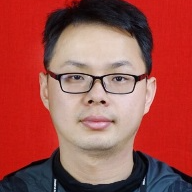High-Performance Supercapacitors: Advancements & Challenges
A special issue of Batteries (ISSN 2313-0105). This special issue belongs to the section "Battery Modelling, Simulation, Management and Application".
Deadline for manuscript submissions: 25 June 2024 | Viewed by 4309
Special Issue Editors
Interests: supercapacitors; aqueous energy storage; batteries; iron-based oxides electrode materials
Special Issue Information
Dear Colleagues,
Nowadays, the transformation from the combustion engine to electrified vehicles is a matter of fact and tremendously drives the demand for compact, high powder-density supercapacitors. Supercapacitors have many advantages on their fast charge and discharge, high powder density, environmentally friendly and so on. High powder density supercapacitors with good energy density will be applied in more city bus and other electrical vehicles. The future challenges, e.g., decarbonization of the CO2 intensive transportation sector, will push the need for such high performance supercapacitors even more.
Therefore, this Special Issue addresses the progress in high performance supercapacitors by pushing a missing focus on digitalization, advanced supercapacitor devices production, modeling, and prediction aspects in concordance with progresses in new materials and pack design solutions.
Potential topics include but are not limited to:
- Electrical, thermal, and electrochemical modeling;
- Lifetime estimation of supercapacitors;
- New materials and advanced manufacturing methods in supercapacitor production.
Dr. Ruizhi Li
Dr. Hai Wang
Guest Editors
Manuscript Submission Information
Manuscripts should be submitted online at www.mdpi.com by registering and logging in to this website. Once you are registered, click here to go to the submission form. Manuscripts can be submitted until the deadline. All submissions that pass pre-check are peer-reviewed. Accepted papers will be published continuously in the journal (as soon as accepted) and will be listed together on the special issue website. Research articles, review articles as well as short communications are invited. For planned papers, a title and short abstract (about 100 words) can be sent to the Editorial Office for announcement on this website.
Submitted manuscripts should not have been published previously, nor be under consideration for publication elsewhere (except conference proceedings papers). All manuscripts are thoroughly refereed through a single-blind peer-review process. A guide for authors and other relevant information for submission of manuscripts is available on the Instructions for Authors page. Batteries is an international peer-reviewed open access monthly journal published by MDPI.
Please visit the Instructions for Authors page before submitting a manuscript. The Article Processing Charge (APC) for publication in this open access journal is 2700 CHF (Swiss Francs). Submitted papers should be well formatted and use good English. Authors may use MDPI's English editing service prior to publication or during author revisions.






